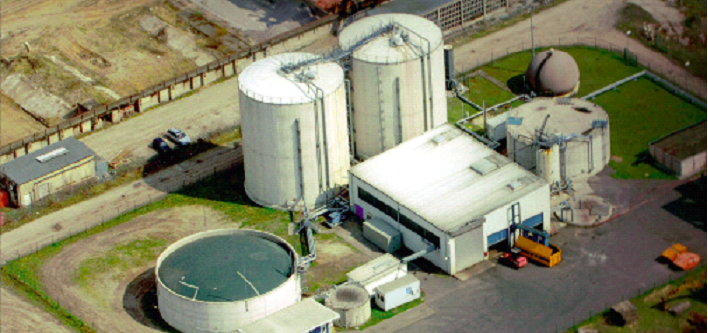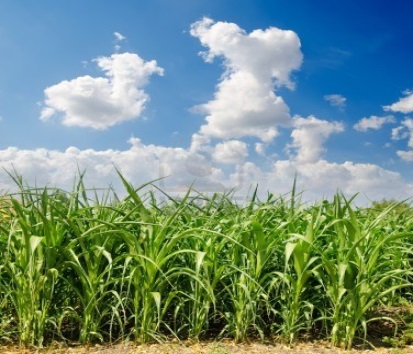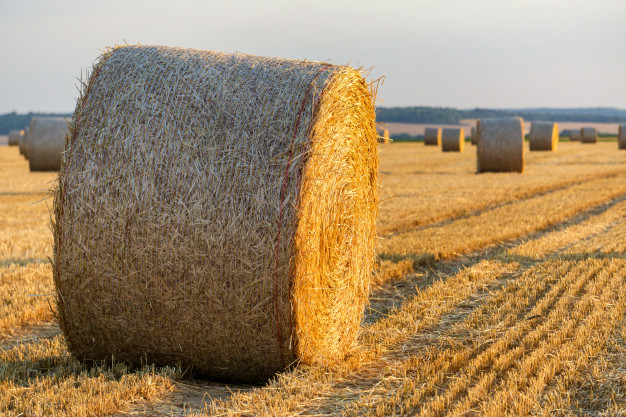Feedstocks for Biogas
Biogas can be generated from various biomass and organic wastes with variable range of moisture contents. The range of potential waste is much broader including: municipal wastewater, residual sludge, food waste, food processing wastewater, dairy manure, poultry manure, and aquaculture wastewater, seafood processing wastewater, yard wastes, and municipal solid wastes
There are several potential energy crops, which are suitable for biogas production including: sugarcane bagasse, sorghum, napier grass, woody crops .The best crops should have low fertility requirements, and low energy costs for planting and harvesting. Further, ethanol production from an energy crop will produce large volumes of stillage wastewater, which can be converted to biogas. Also, the production of biodiesel from oil crops produces a glycerol wastewater can also be converted to biogas.
Typical biogas which consists of 55-60 % of CH4, 30-35 % of CO2, 1-3 % of H2S and 1-2% Moisture. Raw biogas can be upgraded to BioCNG/CBG by applying suitable upgrading technology. The biogas once upgraded will have CH4 >95% and CO2 <5%, which can be used as vehicle fuel or for various industrial applications or as replacement for LPG.
 | MSW wasteJ & F biogas has several years of experience of designing and operating MSW based biogas plants. One of the first plants in Fürstenwalde, Germany was designed and for more than 10 years. The plant was processing close to 40,000 tonnes of MSW waster per year and generating 1.4 MWe power. |
 | Napier GrassNapier grass, a tropical plant, can grow up in drought and dry conditions. Its organic compositions are an ideal feedstock for biogas production. Napier grass has suitable and promising characteristics as energy crop for biogas production. In general, the usage of grassland as a renewable source of energy for biogas production will provide considerable quantity of environment protection. Perennial grasses, especially C4 grasses, are excellent feedstocks for renewable energy production in support of several rationales such as high potential of dry matter yields, fast growth, and additional potential use of inputs compared to annual crops. |
 |
Lignocellulosics such as wheat straw and rice straw are potential feedstocks for biogas generation. Paddy straw has abundant lignocellulose which is rich in organic matter like cellulose, hemi-cellulose and lignin. In countries like India straw is generally disposed off by burning causing environmental pollution whilst it can be used for biofuel generation. The digestibility of paddy straw is low due to high lignin and silica content. J & F biogas has experience of developing straw based biogas plants in Europe. With suitable pre-treatment process it is possible to break down previously indigestible organic materials, by removing the lignin coating. Feedstock materials such as straw, husks, shells, wood waste, reeds, biogas digestate can be used efficiently in the AD process. |
 |
During palm oil extraction process, by-products such as POME, EFB (Empty Fruit Bunches) are generated. Majority of the Palm oil mills practice the method of storing POME in open lagoon type ponds by setting up lagoon type digesters for treatment of POME. There are several negative environmental effects which have been proven by such storage practices. Biogas from POME: POME is a good feedstock for biogas generation. The value of POME can be completely realized by setting up thoroughly engineered biogas digesters made up of quality tanks for treatment of POME. Biogas generated can be used for power or for bio-methane generation. |
 |
EFB is another by-products generated during Palm oil extraction process. Currently EFB is used as manure and for other diversified applications which vary from mill to mill. J & F Biogas specializes in offering biogas solution for organic solid digestion via proprietary fermentation technology. EFB can be converted in to biogas for power generation or BioCNG generation of natural gas quality. The digestate generated after fermentation process can be used as manure for plantations. Using EFB as feedstock for biogas generation is of added value in comparison to conventional practice of using EFB as manure. Post fermentation process 80% of EFB is recovered back as manure since only organic solids in EFB are converted in to biogas. Setting up biogas plants using EBF doubles the income to Palm oil mills by initially extracting the biogas from EFB followed by usage of digestate as manure. |

